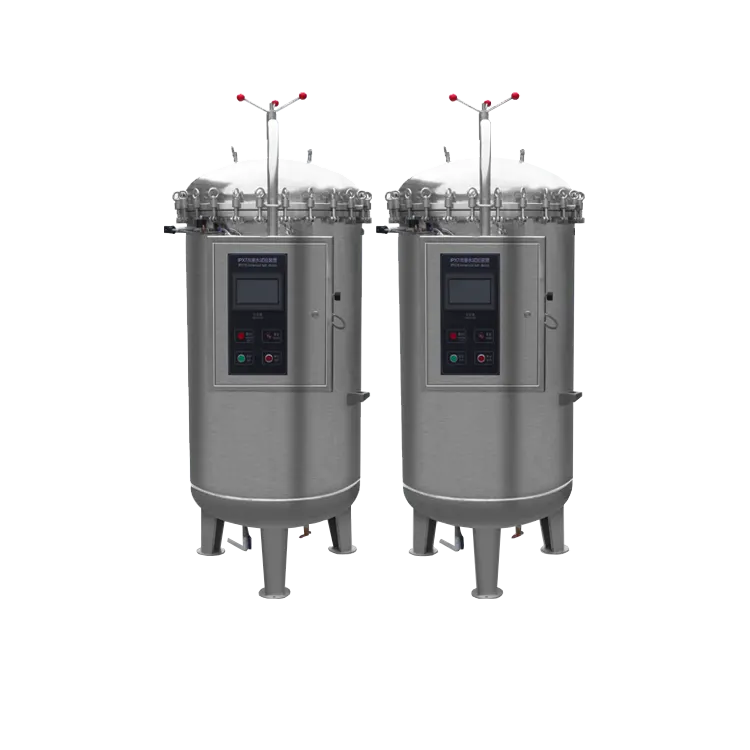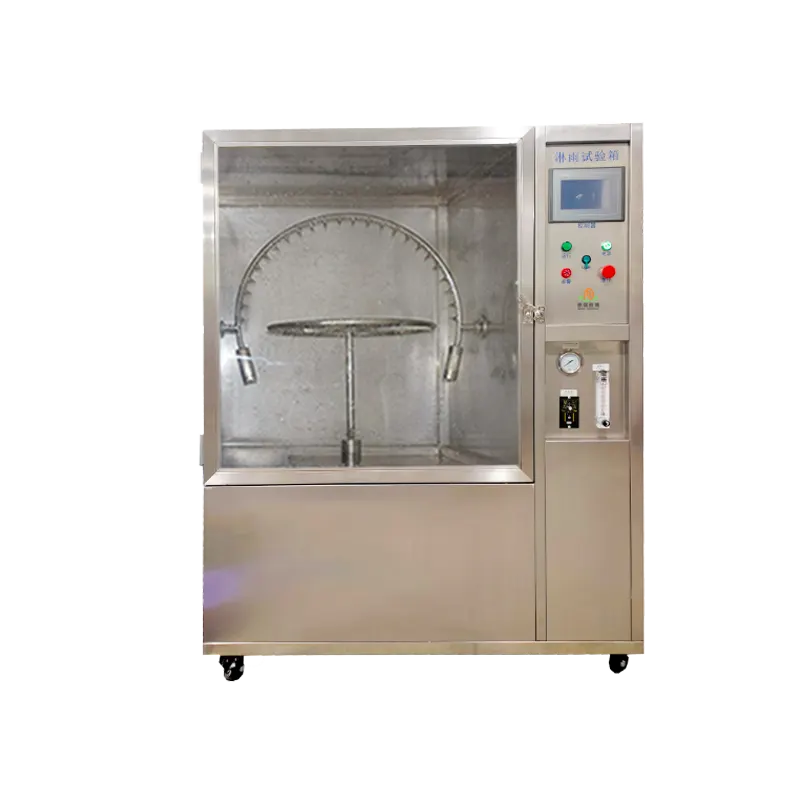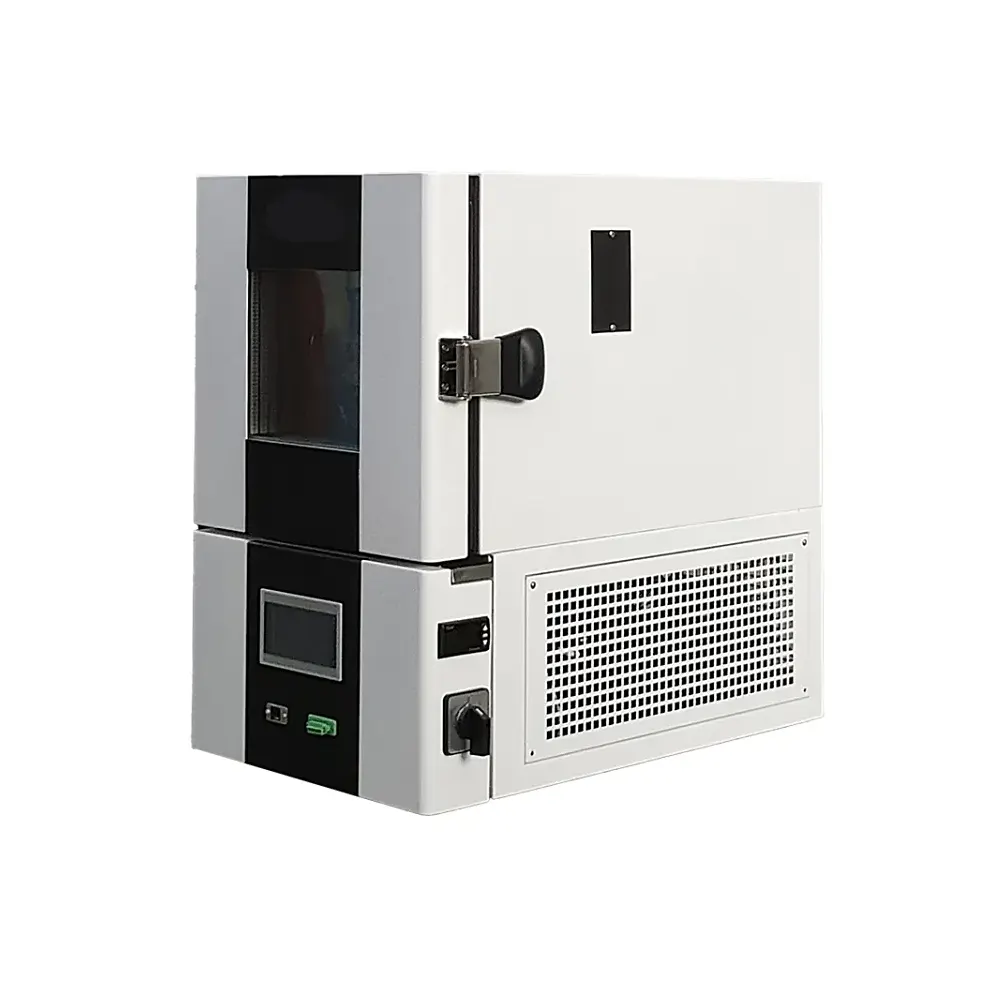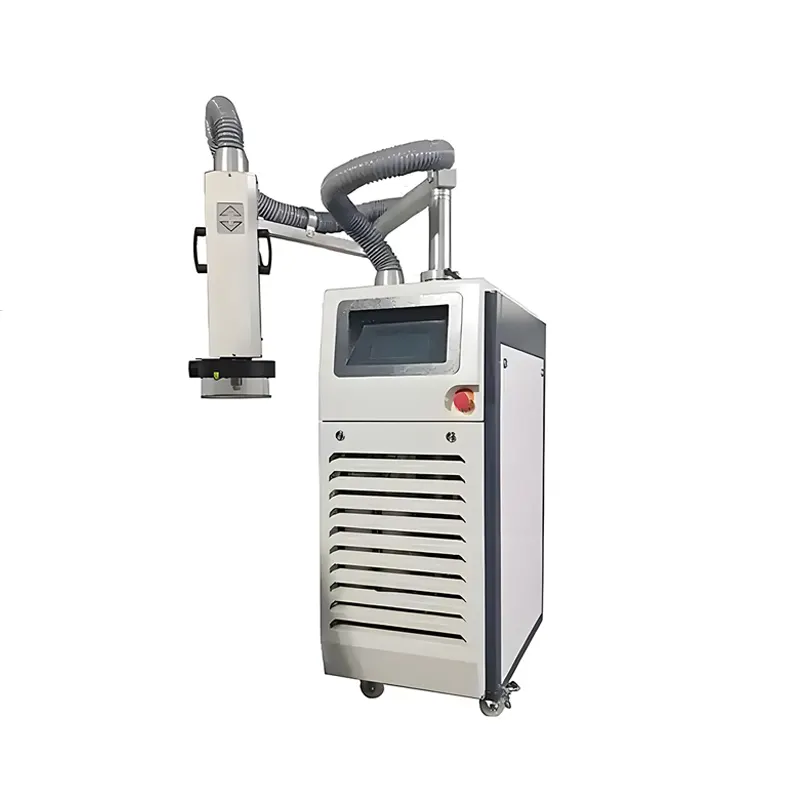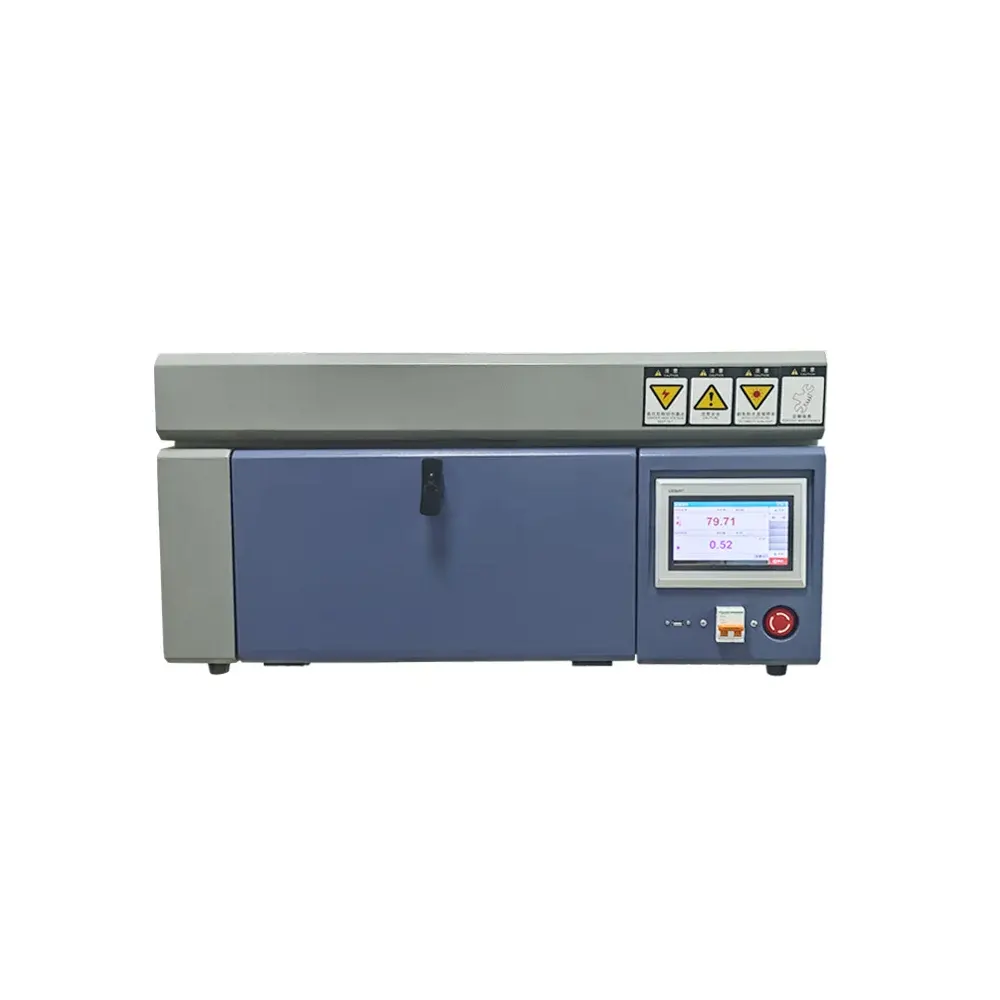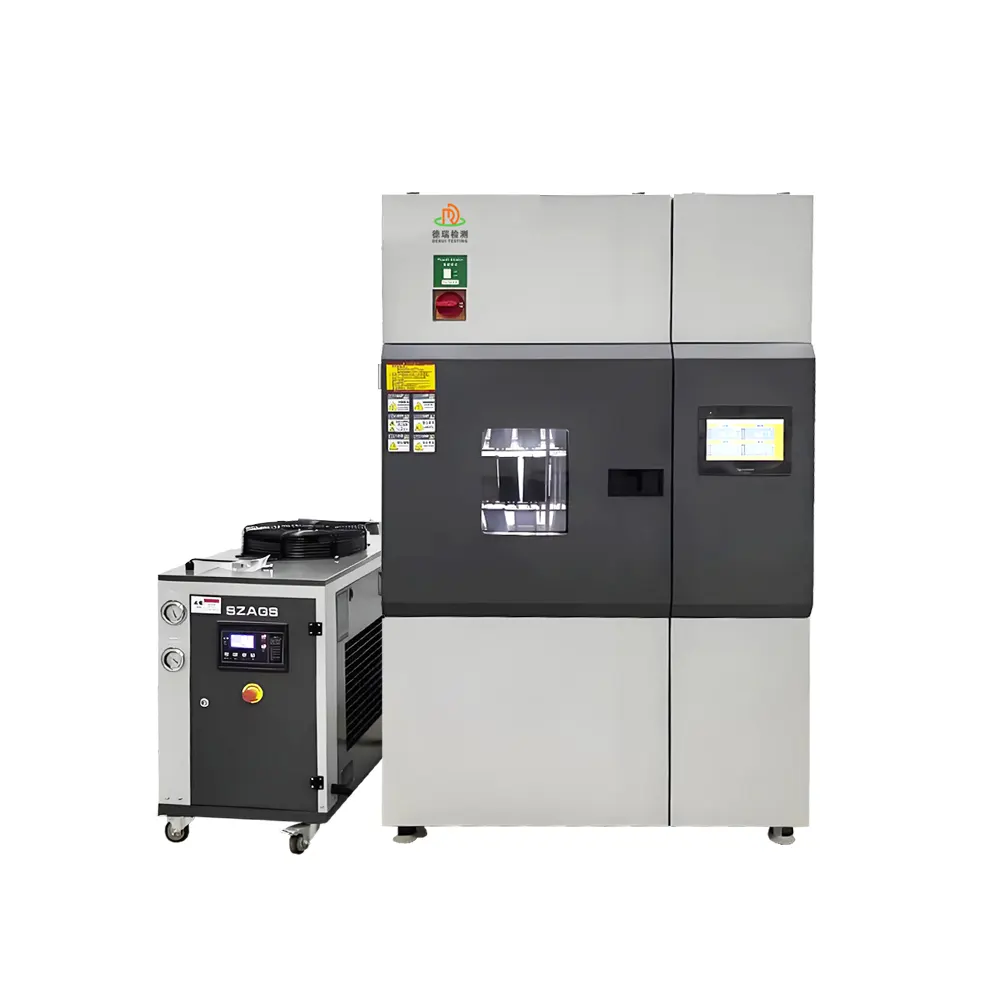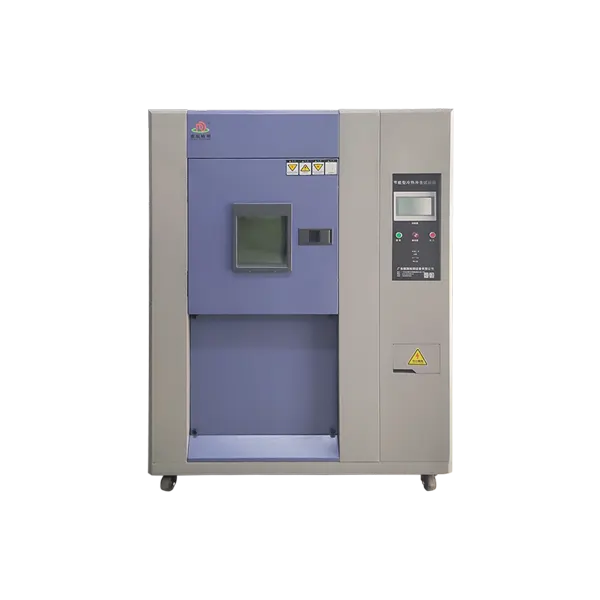The Two-Zone Thermal Shock Test Chamber offers cutting-edge technology to ensure precise thermal testing. Its dual-zone configuration enables simultaneous heating and cooling cycles, enhancing the speed and accuracy of testing procedures. This ensures that your products can withstand extreme temperature changes without compromising performance. With programmable controls, user-friendly interfaces, and compliance with industry standards, this chamber is perfect for reliability testing across various applications. Experience unparalleled performance and testing capabilities in one chamber.
Product Feature
1: The control instrument adopts a large-sized touch screen control system.
2:Refrigeration GEA Blog "Compressor Unit or F Tai Kang Compressor Unit"
3:All core electrical components are from Schneider and other brands.
4:The bottom of the studio is designed with drainage channels to prevent steam condensation and to protect the test workpieces to the greatest extent.
5:The lighting system adopts Philips kits, and the observation window is designed in a funnel shape, providing a wider field of view for observation.
6:Leakage protection design for safer operation
Product advantages
1.Two boxes in vertical layout
2. The ball shaft driver can reliably guide the basket.
3.The two-box baskets can carry 20 kg, the three-box ones can carry 50 kg, or custom-made ones can carry even heavier weights.
4.The protective shield around the bracket used for holding the sample can be removed.
5.The temperature adjustment range of the hot box is +50 °C to +220 °C (optional maximum +250 °C).
6.The temperature adjustment range of the cold box is -80 °C to +70 °C.
7. The air circulation speed in the test space is fast, the temperature change time is short, the temperature distribution is uniform, and the chamber is equipped with an air compensation system suitable for long-term operation.
8. Large lead wire holes suitable for sample power supply and measurement
9.The high-resolution color touch screen with graphic display function makes it convenient to handle environmental simulation programs.
Industry Applications and Typical Cases
1、The electronics and semiconductor industry
Chip reliability verification
The scenario involves switching IC chips from -65℃ (low-temperature chamber) to +150℃ (high-temperature chamber) within 10 seconds, repeating this cycle 1,000 times to test for solder joint cracking and delamination of the packaging material.
Standards: JEDEC JESD22-A104 (Temperature Cycling), MIL-STD-883 (Military Standard).
2、PCB Weather Resistance Test
The scenario involves subjecting the circuit board to repeated temperature shocks between -40℃ (for 30 minutes) and +125℃ (for 30 minutes) to test for copper foil fractures in through-holes and substrate deformation.
3、Testing of complete consumer electronic devices
Case: The mobile phone was rapidly raised from -40℃ to +85℃ (simulating the transition from the cold outdoors to intense heat inside a vehicle), to verify display anomalies and battery performance degradation.
Automotive and aerospace fields
1、Safety testing of power batteries
Scenario: The new energy battery pack undergoes 100 cycles of temperature shock from -40℃ (1 hour) to +60℃ (1 hour), to assess the risk of electrolyte leakage and shell seal failure.
Standard: GB/T 31467.3 (Environmental Adaptability of Lithium-ion Battery Packs)
2、Sensor accuracy calibration
Case: A 15-second switch of the automotive pressure sensor from -55℃ (low-temperature chamber) to +150℃ (high-temperature chamber) to verify whether the temperature drift error exceeds the standard (such as ±0.5% FS).
3、Limit verification of aerospace components
Application: Test the structural fatigue of satellite solar panel materials under the impact of -120℃ (in the shadow of space) to +120℃ (direct sunlight).
Material and component manufacturing
1、Research on aging of polymer materials
Scene: The rubber sealing ring is rapidly switched between -70℃ and +200℃, and the changes in elastic modulus and the phenomenon of embrittlement and cracking are observed (300 cycles).
2、Metal coating adhesion test
Case: After 50 cycles of impact between 50°C and 150°C, the area of coating peeling off on electroplated hardware parts is inspected (if it is ≤ 5%, it is qualified).
3、Phase change analysis of chemical materials
Application: Study the shift of glass transition temperature (Tg) of epoxy resin under sudden temperature changes (-30℃ ↔ +180℃).
Key points for scene selection
When purchasing equipment, it is necessary to match the specific scene requirements:
1、Temperature range:
Automotive electronics typically operate within the temperature range of -40°C to +150°C, while aerospace materials need to function in a range of -70°C to +180°C.
2、Switching speed:
Military standards require ≤ 10 seconds, while for consumer electronics, it can be relaxed to ≤ 15 seconds.
3、Volume requirement:
50L inner box for testing small PCB boards, and 1000L or larger custom-made inner boxes for automotive battery packs are needed.
4、Meet the standards:
IEC 60068-2-14 (Electronics), SAE J2638 (Automotive), GJB150.5A-2009 (Military Industry)
Usage Precautions
1、Installation Environment
The temperature should be maintained between +5℃ and +25℃, with a 50cm clearance around for heat dissipation.
2、Power Supply Requirements
Three-phase 380V ± 10% voltage, independent grounding (resistance < 4Ω), power 12 - 30kW (depending on model) .
3、Safety protection
Multiple safety mechanisms such as over-temperature protection, compressor overload protection, and leakage circuit breaker, etc.
Derui focuses on the research and development of environmental test chamber, providing a full range of equipment including salt spray test chambers, walk-in test chambers, xenon lamp aging test chambers, etc. It accurately simulates complex working conditions such as temperature and humidity, corrosion, and light exposure, helping industries such as new energy, automobiles, and aerospace to enhance product reliability and shorten the R&D cycle.




